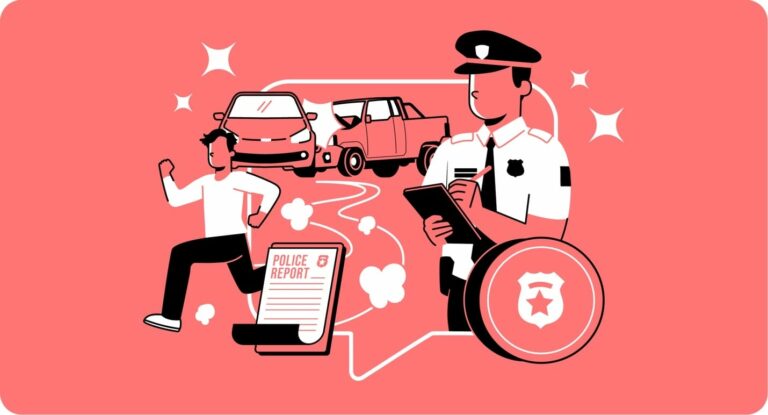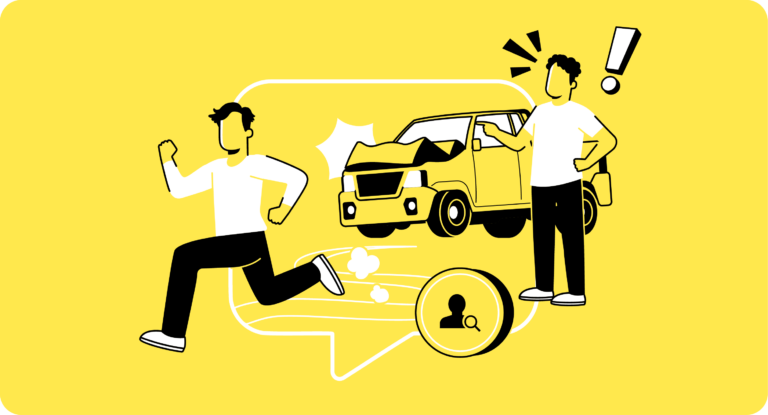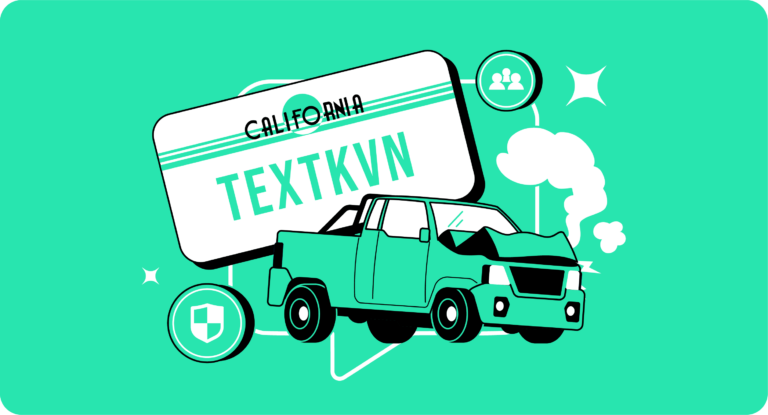Being involved in a hit and run accident can feel emotionally devastating. Not only could you be dealing with catastrophic injuries, but you may feel hopeless thinking that the driver that hit you is going to get away with it. However, when you report your hit and run accident, law enforcement officials can investigate and, in many cases, identify the fleeing driver.
While police work to uncover the identity of the hit and run driver, your car accident attorney from The Crockett Law Group can also begin an intensive investigation. Even if we do not initially know the identity of the driver that hit you, that does not mean we cannot begin building a powerful case against them. Once they are identified, we can move forward with formal insurance claims and civil lawsuits. Your hit and run police report can work as powerful evidence to prove the fleeing driver’s liability for your damages.
California Hit and Run Laws
Fleeing the scene of a car accident is a criminal offense in the state of California according to California Vehicle Code §20001. This is considered a wobbler offense, which means it can be charged as a misdemeanor or a felony once the driver has been identified. Misdemeanor charges apply when there is only property damage whereas felony charges apply if a victim suffers physical injuries. Drivers can face hit and run charges when:
- They refuse to identify themselves to other involved parties
- They leave the scene of the car accident
- They cause severe bodily injury or property damages in a collision
Drivers who commit hit and run can also face penalties in civil court or through their insurance company. Injury victims like you may have the opportunity to file a claim against their auto insurance policy according to California fault insurance laws under California Insurance Code – INS § 11580.1. If there are remaining damages the insurance company does not pay for, you may be able to file a personal injury lawsuit against the at-fault party. Here, the driver who hit you and fled the scene could be ordered to compensate you for your damages in full.
Tip
Do not leave the scene even if you are involved in a seemingly minor car accident. You may be required to stop for fender benders as well. Do not leave the scene if you were driving recklessly and caused the collision, even if you did not crash into another vehicle or stationary object.
How to Avoid a Hit and Run
The last thing you need is to be accused of committing a hit and run accident. If you are not responsible for causing the collision, you may have the right to take legal action against the at-fault party. Fleeing the scene could have an adverse impact on your ability to recover compensation for your damages. Immediately after an accident, you can avoid hit and run allegations by:
- Immediately pulling over and stopping your vehicle
- Move your vehicle out of the primary lanes of traffic whenever possible in accordance with California Vehicle Code §22651
- Calling emergency responders and law enforcement officials to the accident scene
- Exchanging information with other involved parties
- reporting the accident to the California Highway Patrol (CHP) and the police
You should never leave the scene of the accident if you hit or injure an animal either. Do not try to move the animal. Depending on the type of animal, you may need to notify CHP, the police, or the Orange County Humane Society. If anyone was seriously injured or killed in a collision, CHP and the police should be immediately notified, even if the driver that caused the accident flees the scene. In this case, fleeing drivers may also face criminal charges for vehicular manslaughter under California Penal Code §192(c)(1) or other related charges.
Hit and Runs With Stationary Objects
It is not uncommon for motorists to be under the impression that crashing into a stationary object or causing property damage does not require them to stop. However, if you are involved in an accident where any property is damaged you should treat it as if you were involved in a crash with another vehicle. Some examples of car accidents involving stationary objects include:
- Hitting your neighbor’s pet
- Crashing into a mailbox
- Colliding into private fencing
- Denting a parked car
If you cannot locate the property owner immediately after the accident, make sure to leave a note that includes your identifying information. Leave the note in a location where the property owner can easily find it. You should also notify the local police department or CHP to file a report. This is the best way to protect yourself from potential criminal hit and run charges, even if you are not responsible for causing the accident.
Information to Collect From the Other Involved Party
If the driver that hit you does not flee the scene, there are specific types of information you should obtain wherever possible. These include:
- The driver’s name and address
- The driver’s date of birth
- The name of the driver’s insurance company
- The driver’s license plate number and state
- The insurance policy number and expiration date
- The name and address of the vehicle owner
- The driver’s license number and state
- Proof of financial responsibility
- A list of property damages or injuries
California Car Accident Reporting Requirements
You are legally obligated to file a police report if anyone suffers a minor or serious injury. You must also notify the police of accidents when there is damage valued at more than $750 according to the California Department of Motor Vehicles (DMV). This means you may need to notify the police even if you were involved in a minor rear-end collision or similar accident. You can formally report the accident by completing a Report of Traffic Accident Occurring in California (SR-1) to the DMV. You should do so within 10 days of the accident.
Reporting Your Accident to the DMV
When you are ready to file your SR-1 report, you can obtain a copy through the CHP office, your local DMV field location, or online. Even if the accident happened on private property, it is in your best interests to report the accident if you hope to take legal action against those responsible.
Failure to report your accident to the DMV could have serious consequences. You could have your driver’s license suspended or revoked if you did not have sufficient auto insurance coverage at the time of the wreck or failed to submit an SR-1 report. Once you report an accident to the DMV, it will show up on your driving record indefinitely if you are found liable. However, if the responding officer determines another involved party was to blame, it will not be displayed on your driving record.
Pro Tip
Keep important details about the accident readily available to include in your SR-1 report. This includes when and where the accident occurred, your personal identification information, and proof of financial responsibility.
What to Do if You Witness a Hit and Run Accident
If you witness a hit and run accident, there are specific steps you can take to help the victims. These include:
- Helping injury victims move their vehicles out of the middle of the road
- Checking to see if anyone suffered serious injuries or was thrown from the vehicle
- Assisting injury victims so emergency responders can easily access them
- Contacting 911 and local police
- Providing law enforcement officials with the location of the accident, describing how the incident occurred, and informing them of how many people need medical attention
- Setting up emergency triangles and using flares when safe and necessary
- Offering assistance to anyone unable to talk or walk
If you are driving past a motor vehicle accident that immediately occurred, you should not slow down to look, as you could cause a second motor vehicle wreck. Drive cautiously and obey the traffic orders given by responding officers directing traffic.
Note
Never move someone who has been injured unless you notice fumes or smell leaking gasoline. This could cause worsening injuries. Never smoke around motor vehicle accidents due to the increased risk of fire or explosion.
Common Causes of Hit and Run Accidents
Hit and run accidents can be caused in a number of ways. Identifying the cause of the accident will help us to determine who is ultimately responsible. Just because a driver flees the scene does not mean they are necessarily at fault for the collision. However, fleeing the scene is an indicator that they may share some culpability for your damages. With that in mind, some of the top causes of hit and run car crashes include:
- Distracted driving
- Illegal turns
- Failure to yield to the right of way
- Speeding
- Driving under the influence of alcohol or drugs
- Failure to stop at traffic lights and stop signs
- Driving on the wrong side of the road
- Driving aggressively
- Failure to check blind spots
Reasons Motorists Flee the Scene
Drivers flee the scene for a number of reasons. Sometimes, motorists simply panic. However, that is not a valid excuse. Understanding their reasons for fleeting may make it possible to identify the at-fault party more easily. Those who panicked will often be willing to turn themselves in once they realize what they have done. Here are some of the most common reasons motorists drive away after a car accident:
Violating California Auto Insurance Requirements
According to the California Department of Insurance, all motorists are required to carry auto insurance coverage. The minimum types and amounts of coverage are as follows:
- $5,000 in property damage coverage
- $15,000 per person for bodily injury expenses
- $30,000 per accident for bodily injury expenses
When motorists violate the state’s financial responsibility laws, they may worry that they could face traffic citations, have their driver’s license suspended or revoked, or be arrested. However, a traffic citation and license suspension for failing to carry sufficient auto insurance coverage is better than the alternative which could include jail or prison time and fines.
Driving Under the Influence of Drugs or Alcohol
Motorists who operate a motor vehicle under the influence of drugs or alcohol could face DUI charges under California Vehicle Code 23152. Intoxicated drivers may flee the scene in the hopes of avoiding arrest or allowing their blood alcohol concentration (BAC) levels to come down before turning themselves into the police.
Operating a Motor Vehicle Without a Valid License
If the driver that hit you did not have a valid license, they may flee the scene to avoid criminal charges. Their license could be suspended, revoked, or expired. Motorists who simply left their license at home are less likely to flee the scene, especially now that California has the Mobile Driver’s License.
Criminal Penalties for Hit and Run Accidents in California
Individuals who flee the scene of a car accident may face criminal charges. According to California sentencing requirements under California Vehicle Code § 20002, if you are found guilty of a misdemeanor hit and run, you could be ordered to:
- Pay fines not to exceed $1,000
- Spend a maximum of six months in county jail
- Spend three years on probation
You could also be required to pay restitution to any injury victims and have points added to your driving record. The consequences of a conviction for a felony hit and run are more severe. Fines could be increased up to $10,000, and you could spend up to four years in a California state prison if anyone suffered catastrophic injury or death.
Connect With California’s Leading Hit and Run Accident Law Firm
You do not have to lose hope after being injured in a hit and run accident. Despite the driver fleeing the scene, between your dedicated legal counsel and California’s top law enforcement officials working on your case, it is only a matter of time before the driver who hit you is identified. Once we reveal their identity, we will be ready to move forward with swift legal recourse.
A copy of your hit and run report will act as compelling evidence to prove the defendant’s liability and negligence. When you decide to take action on your claim you could potentially prevent future instances of hit and run accidents. Reach out to a dedicated car accident attorney from The Crockett Law Group to request a 100% free consultation. You can reach us by phone or through our quick contact form to get started as soon as today.










